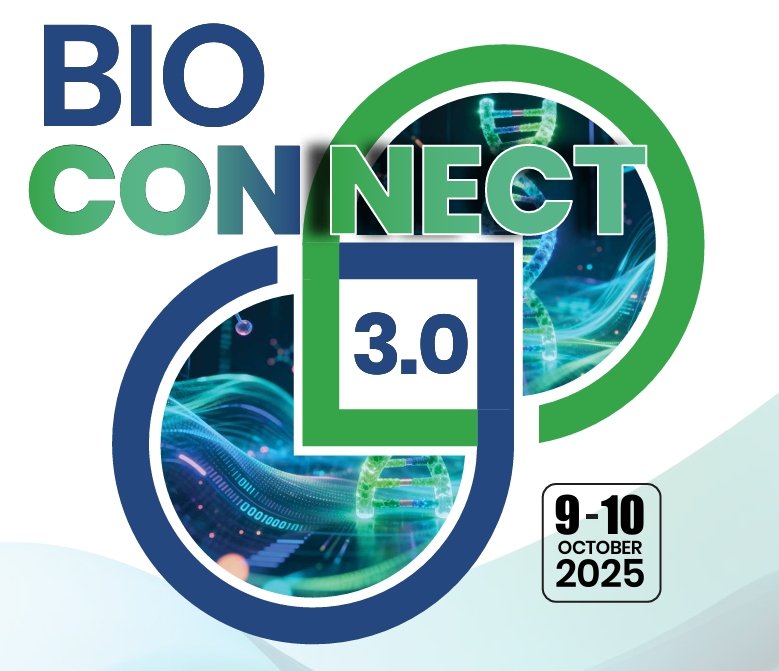Big pharma on biotech acquisition spree
April 08, 2009 | Wednesday | News
Big pharma on biotech
acquisition spree
Pharma giants have
finally come to realize that acquisition of biotech companies is their
last hope with patents expiring and R&D pipelines drying up.
Multi-billion dollar deals is something pharma and biotech companies
should get used to by now. The life sciences
industry had in March, 2009, completed its hat trick with, Roche and
Genentech ending their long drawn ‘hostile war’, by
entering into a mutual agreement, with the former buying out
the latter for $46.8 billion at $95 per share. What is all
the more exciting is analysts predicting that a spate of similar deals
will follow suit in the current year. These acquisitions has but
gone much against market soothsayers advice on shutting out
options of large scale investments (mainly M&As) during a
period of prolonged recession. “The industry is going through
a transition, and such deals were bound to happen to prevent the death
of the big pharma, be it recession or no recession,” confided
a reliable industry analysts under the condition of
anonymity.
Earlier in the beginning of the year, we had seen big pharma, Pfizer,
buying over Wyeth for $68 billion, the fourth largest acquisition in
the pharmaceutical industry. This was followed by another US-based
giant, Merck, closing its $41 billion dollar deal to acquire Schering
Plough. A marriage between the pharmaceutical and biotech companies has
suddenly become a reality and it is accelerating at a
breakneck speed.
Cash is king
An acquisition was a much more attractive proposition for
these bigwigs than an alliance or licensing deals. Much has
been debated about “why an M&A?” but the
million dollar question now cropping up is how could all
these deals, coming to a total of $163 billion, have come about with
the stock markets reaching a rock bottom, cash credit loans drying up
and above all banks declaring bankruptcy.
Firstly, it is but a myth that banks and financial institutions are
reluctant to lend money for such deals . The more appropriate answer
would be that they are looking out for the right deal. “Banks
do have their reservations but at the same time it is not that they
will sit tight on all their cash. They are just looking out for the
right deals. And big pharma has that cash available,”
informed a reliable expert.
“Big pharma can afford to go ahead with such mighty deals.
They have their own cash reserves and then we have stocks.
For the Pfizer- Wyeth deal, banks alone provided around $22 billion.
Big pharma companies make good and reliable borrowers. Banks are
looking not just at right deals but also at better profiles,”
opined Sujay Shetty
Attribute it to the notion that this is the right time for
large scale M&As. Experts unanimously point out that the ideal
mantra at this time would be “To Take the bold
step”. At a Federation of Indian Chambers of Commerce and
Industry (FICCI) meet held in Mumbai recently, Dr Ajay Dhankar from
Mckinsey and Co, New Jersey, said, “Recession is the ripe
time for growth opportunities. The ideal business strategy for these
companies would be to spend as much as possible and invest in different
baskets. It has been observed that it is these companies which emerge
out as winners after the recession.”
“This is the ideal time for buyouts because valuations for
biotech companies are at an all time low so this is the ripe time for
pharma companies acquiring them,” commented the global CEO of
the one of the top CMO companies in the world. “The news is
that in total banks provided a total of $30 billion for these deals.
Moreover these banks have been bailed out by the federal government and
hence they are being provided the requisite cash amount,”
added Majumdar.
The Pfizer-Wyeth acquisition deal was financed through cash,
debt and stocks with banks giving out cash amounting to $22.5 billion.
The Roche-Genentech deal which was sealed at $46.8 billion out of which
$40 billion will be said to be raised through
bonds. The Merck Schering-Plough buyout on the
other hand will be financed with a combination of $9.8 billion from
existing reserves and $8.5 billion from committed financing from JP
Morgan Chase & Co. |
The symbiotic
relationship
With the lurking fear among big-wigs as their revenues taking
a nose dive dip due to drying up of R&D
pipelines and patent expiration of blockbuster drugs, these deals will
definitely be the answer to their prayers.
While commenting on the acquisition trend Sujay Shetty, associate
director, Financial Advisory Services Pharma/LifeSciences,
Pricewaterhouse Coopers Pvt Ltd said, “These
acquisitions will strengthen the pipeline of the pharma companies and
prevent their revenues from falling. Like for Merck, it will also give
them access to the emerging markets. These deals will also
help in a lot of cost reductions. Tapping of emerging markets comes
more in their long term strategy. It has been estimated that by 2012
when patents expire, revenue losses may amount up to $130
billion.”
The environment now is such that on one hand we have big
pharma companies sitting on lots of cash, their account books
showing minimal margins of cash debt, which on a average is just around
six percent, but they are on the verge of collapse with drying up
pipelines and patents of their blockbuster products; while on the other
hand we have biotech companies, having a slew of innovative products in
their pipeline, which are slated to be the next ‘big
thing’ yet reeling under a credit crunch during the prolonged
period of recession. There is a strategic similarity to all these
deals. “The purpose of all the three deals is cost cutting;
for each of the deal, both companies have targets which fit into each
other’s business models. They are complimentary to
each other. Its more of the US and European companies coming
together,” said Supratim Majumdar, industry analyst, South
Asia and Middle
East, Healthcare, Frost & Sullivan.
Take Merck- Schering Plough deal for instance, both the
companies have overlapping portfolios for
cardiovascular, respiratory and anti-viral drugs, and experimental
drugs. Schering-Plough will add animal health products and a consumer
division to Merck’s profile, while bolstering its
women’s health area, led by Merck’s cervical cancer
vaccine, Gardasil. The companies already had an agreement with their
cholesterol treatment, Vytorin, a combination of
Schering-Plough’s Zetia and Merck’s generic drug
Zocor. Moreover Schering-Plough has drugs in late-stage testing that
may top $6 billion in annual sales, and already has a partnership with
Merck to split sales of the Zetia and Vytorin cholesterol pills, which
generated $4.6 billion last year.
A Pfizer-Wyeth conglomerate will bring about a 50 percent increase in
total revenues. Nandakishore K, industry manager, Health care Practice,
Frost and Sullivan had earlier told BioSpectrum when the deal was just
announced, “Pfizer’s dependency on one drug is
huge. A merger will bring about a consolidation in their market
position not just in the purely pharmaceutical space but in diversified
areas like vaccines, animal health and biologicals.”
“Wyeth’s product portfolio includes the
more non-traditional areas of pharmaceuticals which in a way
compliments with that of Pfizer, which focus on niche areas like
oncology and antibiotics. A nexus will give them a wider
base,” said Ajit Mahadevan, partner, Advisory Services, Ernst
and Young. About 12 percent of Wyeth’s revenues comes from
consumer healthcare, five percent from animal health and 36 percent
from biologics. At present, Pfizer has a product pipeline which
includes clinical trials for Sutent (oncology) 10 phase-I programs
whose mechanisms have not yet been designed. In the same therapeutic
segment, Wyeth’s products include clinical trials like
Posutinib (for diseases like breast cancer) and Inotuzumab. Pfizer has
two phase-II and one Phase-I trial in Alzheimer while Wyeth has five
phase-I programs in this segment.
In a joint statement given by both the parties it was specified,
“This combination means a broad portfolio of health care
solutions and treatments for every stage of life:leadership positions
in key therapeutic areas such as cardiovascular, oncology,
women’s health, CNS and infectious disease; in vaccines,
biologics and small molecules; and in animal health, with products for
companion animals, biologics and anti-infectives. A robust pipeline of
biopharmaceutical development projects include programs in
inflammation/immunology, oncology and pain, as well as a significant
opportunity to find a cure for Alzheimer’s disease.”
The Roche-Genentech deal, is more a synergy of capabilities
and expertise. The combined company will be the seventh largest
pharmaceuticals company in the US in terms of market share. It will
generate approximately $17 billion in annual revenues and will employ
around 17,500 employees in the US pharmaceuticals business alone,
including a combined sales force of approximately 3,000 people.
Genentech’s anti-cancer drug as well as best
selling product, Avastin, will be something both parties will be
pinning their hopes on. The study data expected to be released in
April, 2009, on the effectiveness of Genentech’s Avastin in
treating early-stage colon cancer. The drug is already approved for
various types of breast, lung and colon cancers.
Research and early development will operate as an independent center
within Roche from its existing campus in South San Francisco, retaining
its talent and approach to discovering and progressing new molecules.
Roche’s Pharma commercial operations in the US will be moved
from Nutley, New Jersey to Genentech’s site in South San
Francisco. The combined company’s US commercial operations in
pharmaceuticals will operate under the Genentech name, leveraging the
strong brand value of Genentech in the US market. Roche has
already begun to wind down operations at its Palo Alto facility and
will relocate the site’s virology research and development
activities to South San Francisco. Roche’s Palo Alto
Inflammation group is in the process of becoming part of
Roche’s Nutley research and development organization.
Genentech’s late stage development and manufacturing
operations will be combined with the global operations of Roche,
achieving substantial scale benefits, operational synergies and cost
avoidance. Roche’s manufacturing operations in Nutley will be
closed and support functions, such as informatics and finance, will be
consolidated with those of Genentech.
The darker side
The bad news is that the mergers and acquisitions might blunt
the incentive for innovation for biotech companies which have been
swallowed by their pharma partners. There have been fears that these
pharma giants may bring a stopgap to research of
some innovative products which biotech companies have been working
upon.
The much feared about change which might come about is layoffs which
was already initiated and declared during the Pfizer-Wyeth deal. When
the Pfizer-Wyeth deal was announced there were rumors doing the rounds
of a possible 20,000 cuts in jobs globally, out of which 8,000 would be
researchers. Merck has already declared that it would cut
jobs by 16,000 along with operating costs to improve their bottom
lines. After the deal was closed Roche-Genentech came up with a press
release which stated, “Synergies will be largely driven by
reducing complexity and eliminating duplicative functions and processes
in areas like late stage development, manufacturing, corporate
administration and support functions. Savings resulting from this
combination will enable the new company to increase and better focus
its investment in innovation.”
The Roche-Genentech deal will see job cuts amounting to almost 1,500
most of which will be from commercial operations, largely sales and
marketing personnel. Skeptics also foresee that such mergers might slow
down R&D activities. Their contention being that big
R&D teams do not necessarily mean bright future
prospects of blockbuster drugs. They opine that scientists
operate better in comparatively small teams. In the past, we have also
seen big pharma going into numerous other acquisitions with the same
purpose of portfolio strengthening, spending billions of dollars on
R&D alone, however it failed to lead to an upsurge of
products. “The R&D structure is different for pharma
and biotech. So to mathematically assume that innovative
products will double with a merger of two R&D teams is
incorrect. A lot depends on integration,” asserted Majumdar.
However, Shetty gives a justification for his disagreement.
“Pharma companies were looking incremental
innovation, higher productivity and strengthening of R&D. For
this a much deeper impact was required. These acquisitions will help
them achieve such targets. Plus this is the right time for such deals
with valuations reaching historic lows and cost reduction
pressures”.
Who is next in the pipeline ?
The three ‘blockbuster’ mergers will offset and
probably build on the pressure for many other pharma companies to
follow suit. There are talks doing the rounds of Bristol
Myers Squibb (BMS) going the same route. “Yes in fact before
the Merck-Schering Plough deal, we had anticipated either Merck or BMS
going in for a mega deal. So now with Merck having already acquired
Schering Plough, we are expecting BMS going into a similar
deal,” said Shetty.
“I do not think we will see more than two mega deals coming
through this year or even towards early 2010. Out of which BMS is a
likely candidate for the next deal,”
confirmed Majumdar. From the biotech side Amgen and
Genezyme are some of the likely candidates to be acquired. Both these
companies have their focus on niche areas, have products which are most
likely to become blockbusters. Genezyme for instance, has its
focus on rare diseases, giving its products less
prone to competition. Other attractive biotech companies
include Biogene, Vertex and Amylin.
The year 2009, is definitely a landmark in the history of the life
sciences industry. But the message now is loud and clear-Biotech is the
place to be!
Nayantara Som









